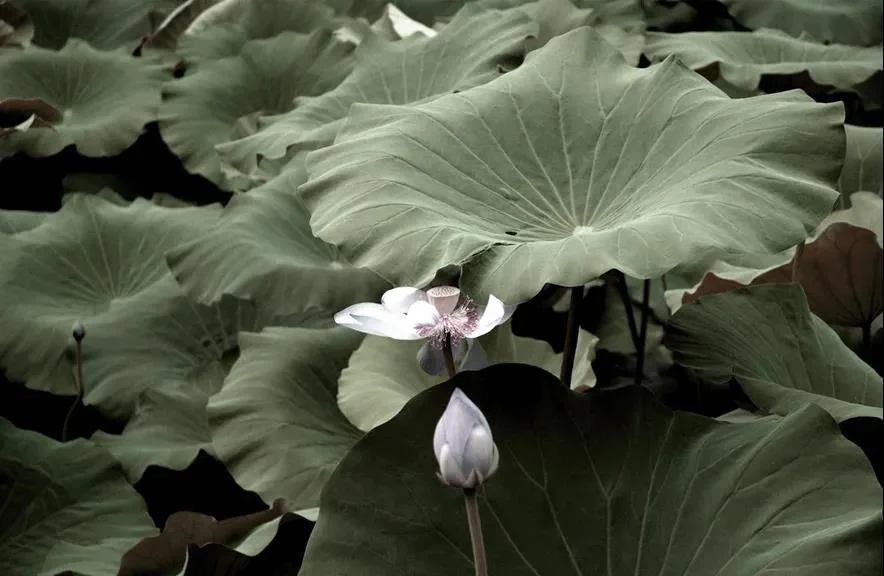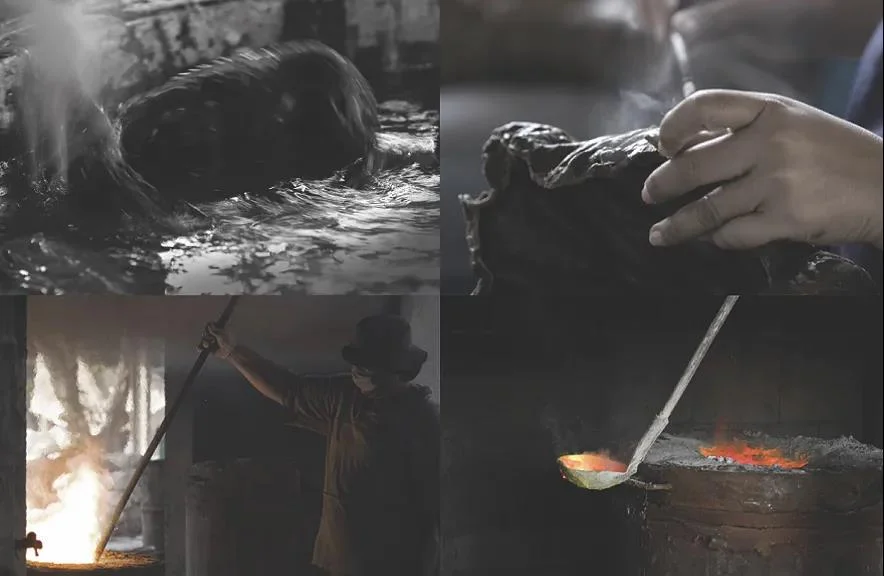This is a short story about life and death and rebirth, and about the transformation of nature into art.
There was once a lotus leaf that found its roots in a wide pond some hours from the Thai capital. The pond was cool and many fish swam around its roots making the water ripple gently as it does all over Thailand when the fish swim and the breezes blow. The leaf was broad and strong and decorated in a myriad of strong veins. When it rained the leaf would catch rainwater, the drops rolling like mercury down to its centre, cooling the leaf.
All around the leaf were other lotus leaves, and many of the famous lotus flowers so adored by the Lord Buddha and his followers for their delicate, sculptural grace and perfection.

Everyday, a small boat would paddle out to the pond and people would select flowers and leaves for the markets of Bangkok. Lotus leaves are used for food and for beautiful wrappings in Thailand. Imagine how surprised our leaf was shortly after being lifted from the pond, to find himself being laid out gently in the sun with some other leaves in the open area of a small bronze foundry. The leaves were gently shaped as they dried by a pair of english hands. Our leaf died in the appreciative hands of this stranger and so entered another life – as it is believed in these lands.


Things happened very fast at this point. The fragile, delicate form of the leaf was painted with rubber to catch the details of its surface and shape. The rubber was used as a mould to make a wax model. The wax model was carefully covered with clay then the clay was heated so the wax would drain out leaving a cavity deep inside it – a cavity that held all the life and history and details of the leaf. A huge crucible full of molten bronze was heated to 1200 degrees celsius and the bright liquid metal was poured into the cavity in the clay, filling the veins and face of the leaf. After cooling the mould was broken open, revealing the rough form of the leaf. The bronze leaf was washed, ground, chased and then patinated to a rich, deep, varying colour that once polished, brought out the wonderful veins and fine shape of the leaf that had once been green and soft.




And so the strong leaf from the lotus pond gave its life to the creation of a vessel that will live on as a gorgeous statement of the life of that leaf and the life of the hands that worked it.

Alexander Lamont is a British designer who has lived and worked in Thailand for 20 years. Some of his most celebrated creations channel the forms and life of nature to become works of organic beauty each with its own individual spirit. These iconic pieces are beautifully presented here displayed with the work of Japanese Ikebana artist Naomi Daimaru. For more details of Alexander Lamont’s collection of accessories and artworks visit our website.
Request a copy of our Editions catalogue by contacting:en*******@*************nt.com





(Left) Black Orchid Vases – the exotic forms of rare orchids inspire a unique group of elegant flower vases
(Right) Star and Starlet Vessels – bud vases that lean and talk to each other in a warm bronze patina




